Occupational safety training for operating boilers
99,000 ₫
Note: The price above is calculated for one person, and it may vary depending on the number of participants in the training course and market fluctuations. For more accurate pricing support, please refer to the quotation table or contact our consulting staff directly.
Occupational safety is an important issue when operating boilers and must be addressed promptly to ensure the health and safety of workers while enhancing the reputation of businesses. The Occupational Safety Training course is one of the effective solutions to raise awareness about preventing workplace accidents for workers when operating boilers.
Table of Contents
Toggle1. Overview of Boilers
a. What is a Boiler?
A boiler is a specialized device used to generate steam or hot vapor. It is commonly employed to provide the necessary temperature and pressure for industrial processes, as well as in heating and refrigeration systems in residential applications. Boilers operate by burning fuel such as oil, gas, coal, or other sources to heat water or other liquids to the required temperature and pressure to convert them into steam. This steam can then be used for a variety of purposes, including heating, supplying temperature for industrial processes, generating electricity, or other applications.
There are various types of boilers, including fire-tube boilers, hot water boilers, and electric boilers, each suitable for specific applications. Boilers are an essential part of many industries and heating systems in buildings and residential facilities.

b. Applications of Boilers in Production
Boilers have many important applications in production and industry. Here are some main applications of boilers:
- Electricity Generation: Boilers are often used to produce steam to drive generators such as steam turbines or thermal engines. The steam generates high pressure and temperature to power these devices and produce electricity.
- Industrial Processes: Boilers provide the necessary heat and pressure for industrial processes such as paper manufacturing, food production, chemical processing, and other applications. Steam is used for heating, drying, distillation, and many other processes.
- Heating: In buildings, factories, and industrial zones, boilers are commonly used for space heating. Steam is circulated through piping systems to warm the air and provide comfortable temperatures for users.
- Industrial Boilers: Large industrial boilers produce steam at high temperatures and pressures. This steam can be used in production processes and other industrial operations such as drying, distillation, and cooling.
- Water Treatment: Boilers can also be used for water treatment, making seawater or saline water safe for industrial or domestic use.
- Cooking and Metallurgy: Boilers are often used in cooking and metallurgy to melt metals and perform other high-temperature processes.
- High-Temperature Steam Production: Industries such as chemicals and oil & gas use boilers to generate steam at very high temperatures and pressures for specialized processes.

c. Industries Using Boilers
Boilers are used in a wide range of industries. Here are some key industries where boilers are commonly applied:
- Food and Beverage Industry: Boilers are used in food production for heating, steaming, drying, distillation, and thermal processing. For example, in beer production, boilers provide steam for heating and blending ingredients.
- Paper and Textile Industry: The paper industry uses boilers for drying paper and providing heat in production processes. In textiles, boilers are used to dry and stretch fabrics.
- Chemical Industry: Chemical plants use boilers to provide the necessary heat and pressure for complex chemical processes such as distillation, drying, and chemical reactions.
- Oil & Gas Industry: In oil and gas production and processing, boilers generate steam and high-temperature vapor for distillation, cracking, and processing operations.
- Metallurgy: Metallurgical plants use boilers to melt metals and perform other thermal processes.
- Pharmaceutical Industry: Boilers are used in pharmaceutical production for distillation, heat treatment, and producing specialized products.
- Electronics Industry: Boilers are applied in electronics and semiconductor manufacturing to provide controlled temperature and pressure for production and testing.
- Shoe and Textile Manufacturing: In shoe and textile production, boilers are used to soften and stretch materials such as leather and fabric.
2. Overview of Safety Training for Boiler Operation
a. What is Occupational Safety Training?
- Occupational safety training for boiler operation consists of sessions designed to raise awareness of how to prevent workplace accidents. Workers who directly operate boilers fall under Group 3.
- The training course helps workers recognize and prevent hazards, reducing the risks of workplace accidents during operation.
REGISTER FOR OCCUPATIONAL SAFETY TRAINING SERVICE
b. Training Duration
Initial safety training duration:
- Total training time is at least 24 hours, including examination time.
- 8 hours of theory on policies, laws, and occupational safety regulations
- 8 hours of theory on basic occupational safety knowledge
- 4 hours of theory on specialized training content
- 2 hours of practical training on specialized content
- 2 hours of final theoretical assessment
The safety training center will divide the time into multiple sessions depending on workers’ schedules. Typically, there are 6 sessions over 3 days, provided the company can arrange consecutive training hours.
Periodic safety training duration:
- Before the occupational safety card expires, workers must undergo periodic safety training, with the periodic training time being at least 50% of the initial training time.
Explanation: The total duration of periodic safety training is at least 12 hours, including examination time. After completing the periodic training and passing the assessment, workers will be reissued an extended occupational safety card.
c. Training Content
| No. | TRAINING CONTENT | TRAINING TIME (HOURS) | |||
| Total | Including | ||||
| Theory | Practice | Assessment | |||
| I | Policies, laws, and occupational safety regulations | 8 | 8 | 0 | 0 |
| 1 | Overview of the legal framework on occupational safety and hygiene. | 6 | 6 | ||
| 2 | Standards and technical regulations for occupational safety and hygiene. | 1 | 1 | ||
| 3 | Specific regulations from state management authorities regarding construction, expansion, or renovation of facilities, production, usage, storage, inspection of machinery, equipment, and hazardous materials. | 1 | 1 | ||
| II | Basic knowledge of occupational safety and hygiene | 8 | 8 | 0 | 0 |
| 1 | Basic knowledge of hazardous factors in the workplace. | 4 | 4 | ||
| 2 | Methods to improve working conditions. | 1 | 1 | ||
| 3 | Safety culture in production and business. | 1 | 1 | ||
| 4 | Rights and responsibilities of employers and employees; occupational safety policies and roles of safety networks. | 1 | 1 | ||
| 5 | Safety rules, signage, use of protective equipment, first aid skills, and occupational disease prevention. | 1 | 1 | ||
| III | Specialized training content | 6 | 4 | 2 | 0 |
| Comprehensive knowledge about machinery, equipment, hazardous materials; risk assessment and management; safe working procedures for equipment and hazardous substances. | 6 | 4 | 2 | ||
| IV | Final assessment of safety training | 2 | 2 | 0 | 0 |
| Total | 24 | 22 | 2 | ||
See more training content of 6 groups
d. Occupational Safety Card
After completing the occupational safety training and passing the assessment, workers will be issued an Occupational Safety Card (commonly referred to as the Group 3 Safety Certificate).
The Group 3 safety card shows details such as name, date of birth, job, and working environment, as well as training duration, red stamp, and signature confirming completion.
According to regulations on card issuance stated in Clause 2 of Article 24 of Decree 44/2016/ND-CP, there are two cases:
- If the employer and employee have a labor contract, the employer must sign, stamp, and countersign the safety card for the Group 3 worker after completing training from an occupational safety training unit and passing the assessment.
- If the worker is freelance or seasonal, without a labor contract, the training unit must sign, stamp, and countersign the safety card after completing the training and passing the assessment.

3. Hazards When Operating a Boiler
Operating a boiler can involve many hazards if not performed correctly or without regular maintenance. Below are some common hazards when operating a boiler:
- Explosion or Fire: Boilers operate at high temperatures and pressures, and if temperature and pressure are not controlled, an explosion or fire may occur. This can cause serious injuries and property damage.
- Water Shortage: Lack of water in the boiler can lead to overheating, causing disruption in the boiler’s operation. This may result in fire or explosion.
- Uncontrolled Steam Release: When steam flows uncontrollably through the piping system, it can cause accidents and injuries to workers and potentially start a fire.
- Loss of Pressure Control: Loss of pressure control in the boiler can lead to an explosion or fire. Safety systems, pressure protection devices, and safety valves should be regularly inspected to ensure safety.
- Overtemperature and Overpressure: Excessive temperature or pressure can cause serious malfunctions. Temperature and pressure control systems must function correctly and be regularly checked.
- Operational Failures: Working with a boiler requires specialized knowledge and technical skills. Operational failures can pose safety risks and lead to fires.
- Toxic Gases: During fuel combustion, boilers can produce toxic gases such as CO (carbon monoxide) and NOx (nitrogen oxides). These gases can harm workers’ health if not properly controlled and removed.
- Water and Steam Leaks: Leaks of water or steam from the boiler can cause slips, hazards, and fire. Systems should be regularly inspected to prevent leaks.
- Power Outages: Power loss can stop boiler operation, leading to loss of pressure and temperature control, increasing risks.
To ensure safety when operating a boiler, strict safety rules must be followed, staff must be trained to work with boilers, and regular maintenance must be performed. Reviewing regulations and safety requirements is also a crucial step in minimizing risks.

4. Measures to Control Workplace Accidents When Operating a Boiler
To control workplace accidents when operating a boiler, careful safety measures must be implemented and industrial safety regulations followed. Below are some important measures:
- Employee Training: Ensure all personnel working with boilers are fully trained on boiler operation, maintenance, and relevant safety rules. Training should be provided regularly and is essential for maintaining safety.
- Regular Inspection: Periodic inspection of boilers to detect safety issues early such as malfunctions, wear, or mechanical failures, thereby reducing the risk of workplace accidents.
- Safety Inspection Planning: Plan regular safety inspections to identify potential issues before they become hazards. This includes checking for leaks, detecting toxic gases, and inspecting valves and safety valves.
- Use of Personal Protective Equipment (PPE): Ensure all personnel working with boilers are equipped with PPE such as safety goggles, gloves, heat-resistant jackets, and helmets when necessary.
- Establish Safe Work Procedures: Define specific safe work procedures for boiler operation, maintenance, and troubleshooting. These procedures must be strictly followed.
- Monitoring and Checking: Implement continuous monitoring systems to track temperature, pressure, and other critical boiler parameters during operation.
- Toxic Gas Management: If the boiler produces toxic gases like CO or NOx, there must be systems in place to safely remove and treat them to ensure no harmful gases are released into the workplace.
- Emergency Response Planning: Ensure everyone knows how to respond in case of an accident or operational failure. Planning helps minimize consequences and protects workers.
- Compliance with Regulations and Standards: Follow all regulations and standards related to boiler operation. This includes obtaining permits and periodic inspections from regulatory authorities.
- Consult Experts: When necessary, consult industrial safety experts to ensure all necessary safety measures are implemented.

5. Benefits of Occupational Safety Training
An Toan Nam Viet provides your business with the following benefits upon completing occupational safety training courses as regulated by Decree 44/2016/ND – CP on occupational safety and hygiene for companies and enterprises.
- Employees can recognize potential workplace accident hazards and take preventive measures to avoid accidents.
- Your business can establish risk prevention measures in production, operation, and maintenance processes.
- Minimizes costs associated with workplace safety risks.
- Uninterrupted production processes help increase labor productivity and product quality.
- Compliance with labor safety laws reduces legal risks.
- Enhances credibility and professionalism, thereby elevating your company’s brand.
Nam Viet’s training courses are designed to prevent and counter external hazards, enabling individuals to avoid injuries or, in severe cases, fatalities.
REGISTER FOR OCCUPATIONAL SAFETY TRAINING SERVICE
6. Customer Feedback After Completing Training
An Toan Nam Viet has years of experience partnering with many businesses in Vietnam, especially in southern provinces. This responsibility is invaluable, which is why Nam Viet’s Occupational Safety Training is increasingly professional. The motivation for Nam Viet’s growth comes from positive feedback and constructive suggestions from our clients. Below are some testimonials from our partners.
Hoa Dat Construction & Trading JSC
“Nam Viet’s service greatly helped us simplify occupational safety and complete safety documentation for work processes. The consulting team responded promptly and enthusiastically to our inquiries. 5 stars for Nam Viet.”
See more customer interviews after using our services from An Toàn Nam Viet
7. Occupational Safety Training Capacity of An Toan Nam Viet
An Toan Nam Viet is a reputable and high-quality occupational safety training center in Vietnam. Our training sessions are conducted continuously at production workshops, factories, and construction sites across the country (all 63 provinces of Vietnam).
REGISTER FOR OCCUPATIONAL SAFETY TRAINING SERVICE
Occupational Safety Training License
- An Toan Nam Viet has been inspected and certified by the Department of Labor – Social Affairs Safety Bureau for compliance and licensing of occupational safety training. This strengthens our training capabilities.

Materials and Lectures
- Before being included in OST courses, training materials are reviewed to ensure knowledge accuracy and practical effectiveness.
- Teaching methods are standardized according to An Toan Nam Viet guidelines, developed by experts in occupational safety and hygiene training for maximum learning effectiveness.
Facilities
- Controlling classroom factors improves teaching performance and student knowledge absorption.
- Our training facilities offer spacious classrooms meeting standards for area, lighting, and training equipment.
8. Nationwide Reputable Occupational Safety Training Center
At An Toan Nam Viet, we prioritize occupational safety training. For us, equipping workers with self-protection knowledge contributes to nation-building.
We carefully prepare every detail, from tools and teaching equipment to curriculum, documents, audio, and lighting.
Our instructors are experienced experts, often with research on hazard identification and prevention across industries.
Lectures are practical, engaging, and easy for workers to understand, aligned with Decree 44/2016/ND-CP.
This helps workers learn hazard prevention measures and apply them appropriately in real work situations.
Our training center is proud to offer professional, reliable occupational safety training with advantages:
- Competitive training costs while maintaining quality.
- Flexible training schedule to fit company production.
- Quick and legally compliant certification procedures.
- Experienced instructors with many years in the field.
- Controlled classroom factors improve teaching efficiency and knowledge absorption.
- Courses tailored to occupational safety in enterprises.
- Dedicated, professional service ensuring fast and accurate support for clients.

9. Additional Occupational Safety Training Resources
- Occupational Safety Materials for Boiler Operation
- Occupational Safety Training Materials Set
- Occupational Safety Training Test Set
- Occupational Safety Quiz for Boiler Operation
- Occupational Safety Training Slides for Boiler Operation
10. Occupational Safety Training Activities
1 review for Occupational safety training for operating boilers
No comments yet

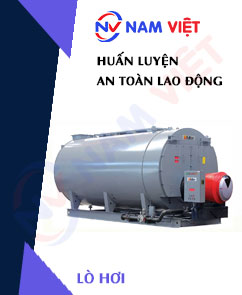
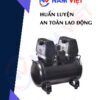
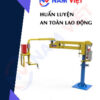



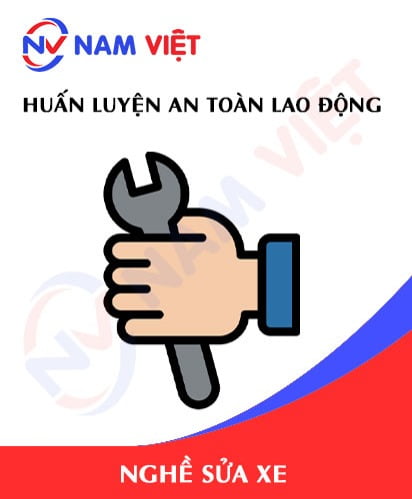
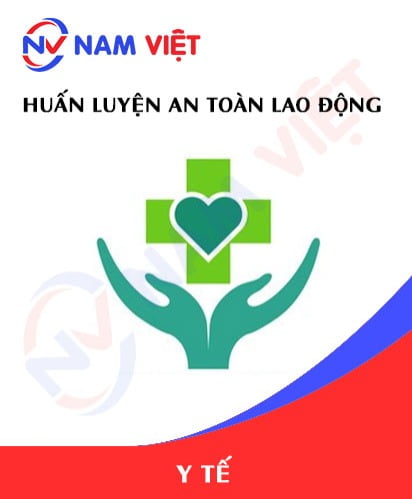
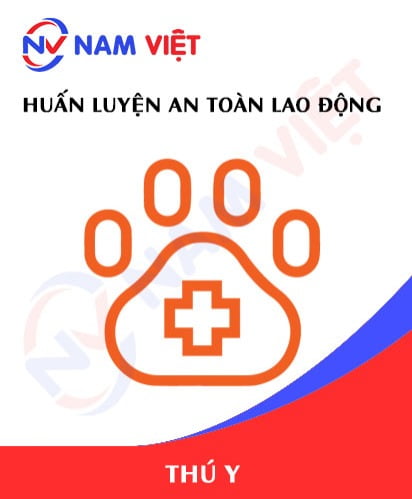





phanminhhang341
Trung tâm huấn luyện an toàn lao động chuyên nghiệp ở Việt Nam nha